If you’re contemplating a visit to Truc Lam Phuong Nam Can Tho Monastery, a renowned haven of tranquility, delve into the detailed travel experiences on Vietnampeace.com. The Truc Lam Phuong Nam Can Tho Monastery is a well-known spiritual destination where visitors can explore the largest monastery in the Mekong Delta. It offers a serene escape for those seeking inner peace amidst the hustle and bustle of the soul, allowing for sightseeing and spiritual activities such as temple visits and prayers for luck, peace, and good fortune.
1. Introduction to Truc Lam Phuong Nam Can Tho Monastery
Located in My Khanh commune, Phong Dien district, on the outskirts of Can Tho city, approximately 15km from the city center, the Truc Lam Monastery is a highly acclaimed temple with cultural and architectural influences from the Ly and Tran dynasties.
Truc Lam Can Tho Monastery is the largest in the Mekong Delta, a significant Buddhist structure in the Southwest, proposed by the former Minister of Defense, General Pham Van Tra.
2. Construction and Operation Timeline of Truc Lam Monastery
Covering an area of nearly 4 hectares, the Phuong Nam Can Tho Monastery began construction in July 2013 and was completed after ten months of work in May 2014. The inauguration ceremony, held on May 17, 2014, was a significant event presided over by the City’s Buddhist Executive Board.
3. Overview of the Design of Phuong Nam Can Tho Monastery
Truc Lam Phuong Nam Monastery in Can Tho impresses with its architectural design featuring tiled roofs, wooden frames made of ironwood, brick walls, and floors and pathways paved with Chinese tiles.
The premises of the Truc Lam Phuong Nam Can Tho Monastery are meticulously arranged with 20 construction items, including the Ancestral Hall, a spacious auditorium, a water pavilion, a 9-story pagoda, a drum tower, a bell tower, monks’ quarters, a guesthouse, meditation hall, library, and more.
Noteworthy are the elements crafted from about 1,000 blocks of ironwood imported from South Africa, a bronze statue of Buddha Shakyamuni, wooden statues of Bodhisattvas, and venerable masters carved from Du Sam wood, aged 800 years.
4. Unique Architectural Features at Truc Lam Can Tho Monastery
Truc Lam Phuong Nam Can Tho Monastery is a complex of structures featuring unique architectural elements that leave a lasting impression on visitors.
4.1. Three-Gate Entrance and Outer Courtyard
One of the most unique architectural features at Truc Lam Phuong Nam Can Tho Monastery is the three-gate entrance, constructed with a steel-reinforced concrete structure resembling wood. It consists of three paths: the main path in the center and two symmetrically flanking paths.
The three-gate entrance boasts an impressive design with a boat-shaped roof and four dragon-headed pillars. The roof is adorned with red-colored ceramic tiles and decorative patterns featuring the Falun Dafa wheel at its peak.
Visitors pass through the three-gate entrance at the central courtyard, adorned with 18 stone-carved statues of the “Eighteen Arhats.”
4.2. Main Hall Area
From the central courtyard of Truc Lam Phuong Nam Can Tho Monastery, a direct path leads to the main hall, also known as the Dai Hung Buu Dien, with an eight-roof tiled roof following the architectural style of the Tran dynasty. The entrance, constructed in a spacious area, can accommodate hundreds of worshippers simultaneously. Flanking the hall are the bell tower (on the right) and the drum tower (on the left).
The main hall area is designed with a five-span, two-wing structure and three entrances, exuding an aura of solemnity and grandeur. Noteworthy are dual yin-yang roofs and a Falun Dafa wheel in the middle. All the rafters, columns, and crossbeams supporting the main hall are crafted from ironwood and other precious woods.
4.3. Ancestral Hall Area
To reach the Ancestral Hall area of Truc Lam Phuong Nam Can Tho Monastery, visitors walk along the path behind the main hall. In the front courtyard, there are three sizeable stone-carved meditation statues, symbolizing the three founding masters of the Truc Lam tradition: Master Phap Loa, Master Huyen Quang, and Master Tran Nhan Tong.
The Ancestral Hall is roofed with four curved tiles, resembling a boat, following the architectural style of the Ly dynasty. Inside the main hall of the Ancestral Hall area, visitors can observe the standing statue of Master Dat Ma and the three venerable ancestors. Across from the Ancestral Hall is a small garden featuring a seated meditation statue of King Tran Nhan Tong.
4.4. Common Activity Area
The activity area for the monks within Truc Lam Phuong Nam Can Tho Monastery, located just behind the Ancestral Hall, includes facilities such as a library, kitchen, exhibition room, and monk dormitories. The serene and spacious surroundings, adorned with numerous trees, provide a peaceful atmosphere and picturesque scenery, making it an ideal spot for photography enthusiasts.
The communal activity area of Truc Lam Phuong Nam Can Tho Monastery has a restricted zone comprising living quarters and private grounds for the monks. Access is limited to monks within the monastery and individuals with specific duties requiring entry.
4.5. Free Healthcare Area
The free healthcare area at Truc Lam Phuong Nam Can Tho Monastery serves as a traditional medicine treatment room, specializing in providing medical care for patients using traditional Vietnamese remedies.
The healthcare facility operates Tuesdays, Thursdays, and Saturdays from 7 am to 11 am. Numerous patients visit the free healthcare area daily, seeking medical assistance.
4.6. Rear Entrance Area
Continuing straight, turning left past the residence of the monastery’s abbot (used for rest and activities), visitors will encounter a giant statue of Buddha laughing. This area can be accessed through the rear entrance. When exploring Can Tho, don’t forget to choose an ideal and comfortable accommodation for your stay.
5. What to Explore at Truc Lam Phuong Nam Can Tho Monastery?
5.1. Explore the Monastery’s Architecture with Traditional Vietnamese Elements
Truc Lam Phuong Nam Can Tho Monastery stands out with its purely Vietnamese architectural style from the Ly and Tran dynasties for spiritual enthusiasts interested in exploring unique architecture. The three-gate entrance exhibits a boat-shaped design with four dragon-headed pillars, red-tiled roofs, and intricate decorative patterns featuring the Falun Dafa wheel.
Discovering the architecture inside the main hall reveals exciting features, such as phoenix and dragon motifs on supporting columns and gold-threaded couplets, symbolizing the vigorous development of Buddhism during the Ly-Tran dynastic era.
5.2. Instagram-Worthy Spots at the Monastery
Visitors to Truc Lam Phuong Nam Can Tho Monastery can sightsee and capture Instagram-worthy moments at various beautiful locations within the monastery. These include the drum tower area, the area with statues of arhats, the spot with 33 manifestations of Bodhisattvas, the serene garden in the activity area, and the small garden opposite the Ancestral Hall.
5.3. A Peaceful Weekend Getaway, Away from the Noise
Truc Lam Phuong Nam Can Tho Monastery is an ideal destination for a serene weekend getaway, offering a blend of spiritual significance, cultural richness in Buddhist beliefs, and traditional artistic architecture. Escape the hustle and bustle of life, immerse yourself in the vast and tranquil space, and cherish your soul to the sound of resonating bells and Buddhist scriptures.
5.4. Offer Incense, Pray for Peace for Your Family
Beyond enjoying the pure and serene atmosphere and admiring the unique architectural structures of the monastery, visitors can also offer incense and pray for peace, blessings, and good fortune for their families.
6. Detailed Guide to Visiting Truc Lam Phuong Nam Can Tho Monastery
6.1. How to Get to Truc Lam Phuong Nam Can Tho Monastery
Truc Lam Phuong Nam Can Tho Monastery is approximately 15km from Can Tho’s city center. Visitors can reach the monastery by taxi, motorbike taxi, or personal vehicle.
For those traveling by personal vehicle, follow Tran Phu Street from the city center, continue straight to the intersection of Cach Mang Thang 8 Street and Hung Vuong Street, turn right onto Cach Mang Thang 8 Street, and proceed to the intersection of Nguyen Van Cu Street. Turn left onto Nguyen Van Cu Street and continue for about 10km until I reach My Khanh commune and the Truc Lam Phuong Nam Can Tho Monastery entrance.
6.2. Opening Hours of Truc Lam Phuong Nam Monastery
Truc Lam Phuong Nam Can Tho Monastery is open daily from 7 am to 7 pm, providing convenient hours for visitors to explore and enjoy the monastery’s surroundings.
6.3. Admission Fee at Truc Lam Phuong Nam Monastery
Entrance to Truc Lam Phuong Nam Can Tho Monastery is free, allowing visitors to explore and appreciate the spiritual and cultural aspects without any admission fees.
7. Important Notes When Visiting Truc Lam Phuong Nam Can Tho Monastery
Truc Lam Phuong Nam Can Tho Monastery is a spiritual and cultural tourism site, and visitors are advised to consider the following:
- Dress modestly, respecting the sacred environment of the monastery.
- The monastery grounds are extensive, and visitors must walk a fair distance to explore everything, especially during the afternoon, for a cooler experience.
- There are rest areas for visitors, and a self-service water station is available within the monastery.
- Truc Lam Phuong Nam Can Tho Monastery does not charge parking fees. However, visitors may contribute to the monastery’s charity fund if desired.
- The monastery is close to the My Khanh tourist area, allowing visitors to combine their visit with exploration of the My Khanh tourist site.
Truc Lam Phuong Nam Can Tho Monastery is a cultural space with intriguing elements, making it a worthwhile experience. With the information provided in this article, we hope you have a fulfilling journey exploring Truc Lam Phuong Nam Can Tho Monastery.

The new Zen temple was inaugurated in 2014 – Can Tho tourist destination (Image: Collection)
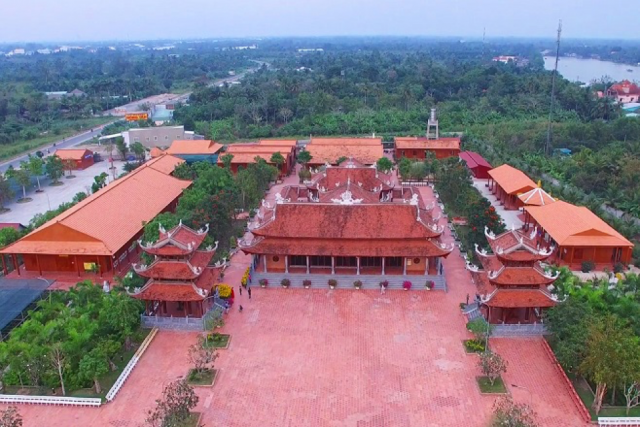
A large campus consisting of many construction sites (Image: Collection)
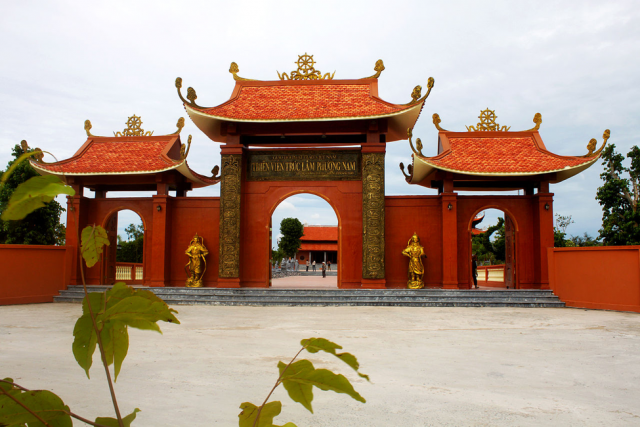
The gate is spacious and spacious (Image: Collection)
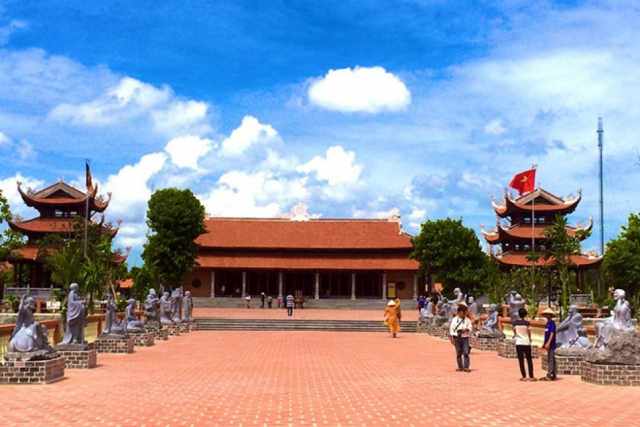
Vast courtyard paved with bright red tiles (Photo: Collection)
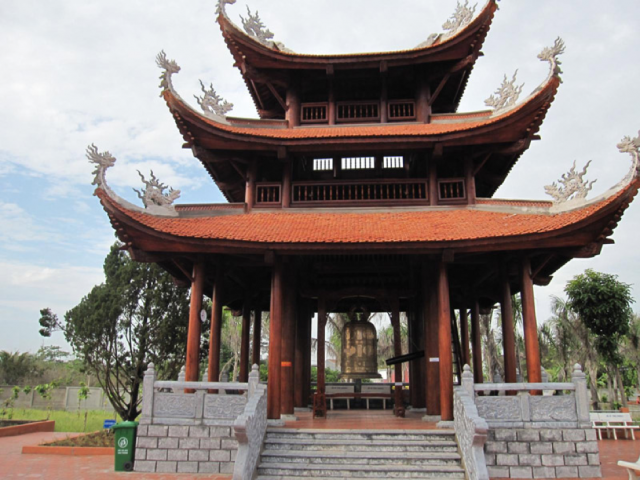
The roof is curved in the shape of a boat tail (Image: Collection)
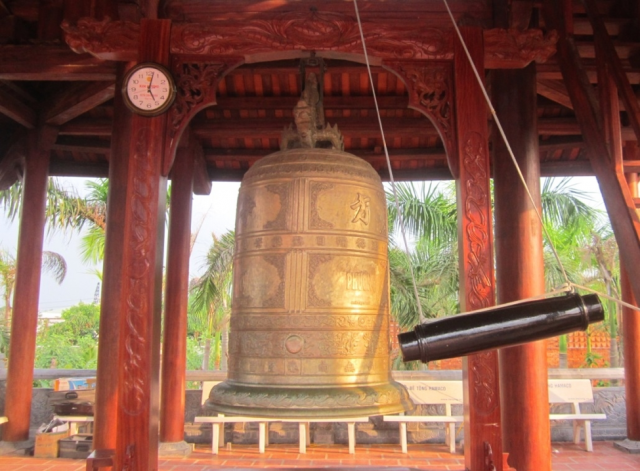
The bell tower (Image: Collection)

Bridge to the sea of dumbbells painted bright red (Image: Collection)
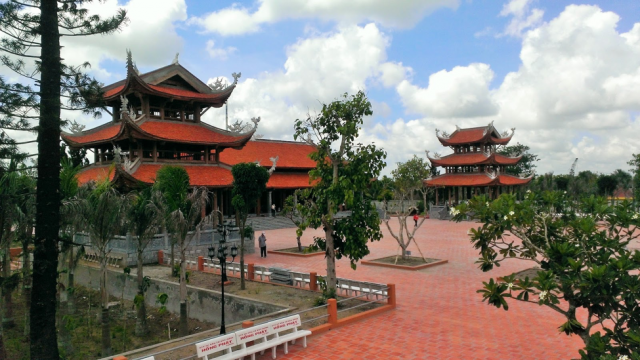
Space harmonious layout (Image: Collection)
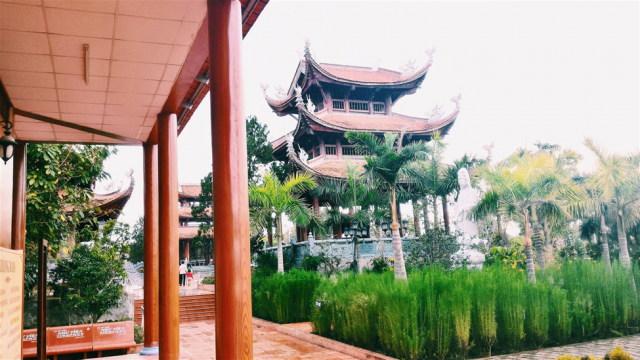
In the monastery, many trees with air conditioning (Image: Collection)
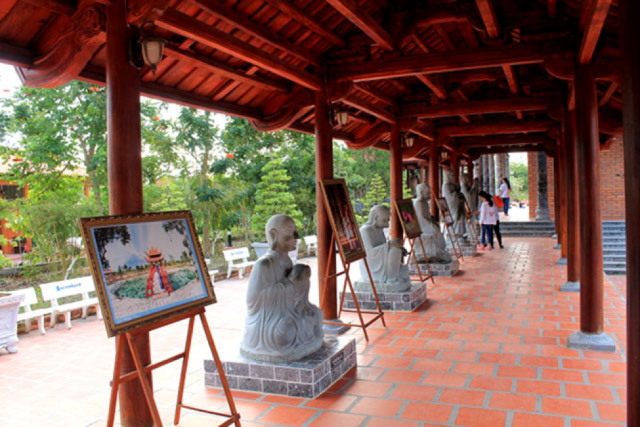
Corridor to place the statues of sculptures made of granite (Image: Collection)
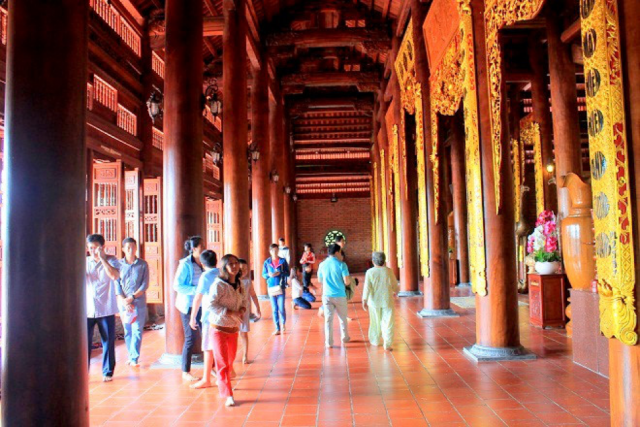
People go to the temple ceremony on the full moon day, the first day (Photo: Collection)
